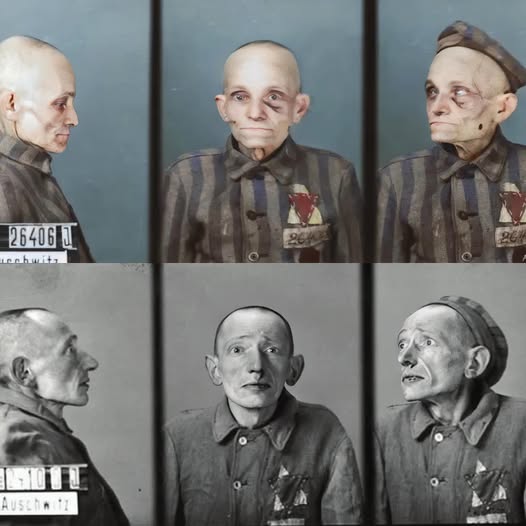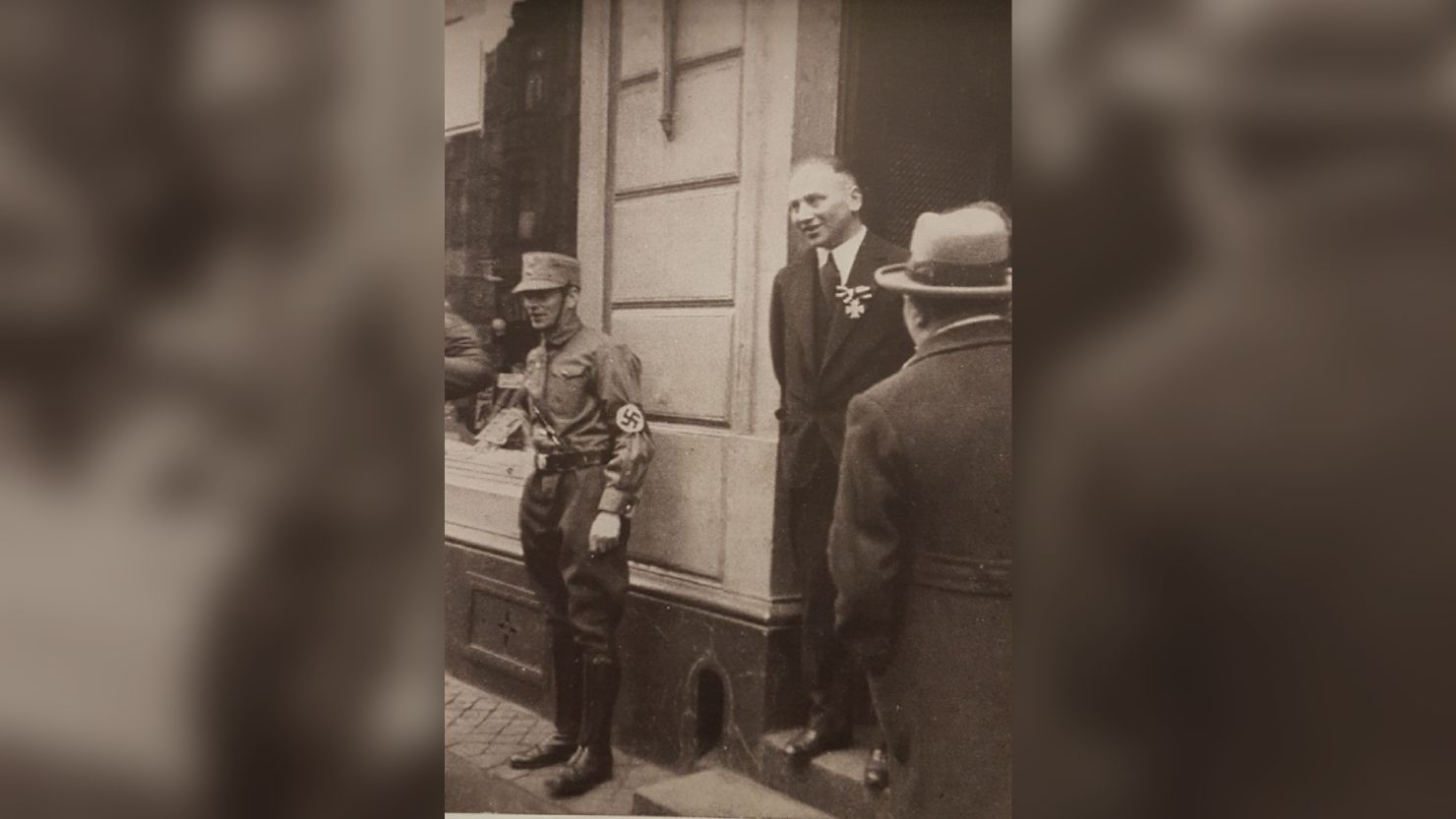THE FACE THE NAZIS COULDN’T ERASE

THE FACE THE NAZIS COULDN’T ERASE
This is Aron Löwi — a 62-year-old Jewish merchant from the small Polish town of Zator. He was a husband, a neighbor, a man who once had a name, a story, and a community that knew him.
But on March 5, 1942, everything he had was stolen forever.
When Aron arrived at Auschwitz, he was no longer a man. He became prisoner number 26406. His humanity was stripped away, replaced with a number, a symbol of the brutal system that sought to erase every part of his identity.
The Face of Suffering
The haunting registration photo taken that day shows a man whose spirit had already been shattered. Aron’s face is bruised, his eyes hollowed with fear, and his body worn down before he even entered the “gates of hell.” The photo is a chilling testament to the dehumanization he faced — a life reduced to a number, stripped of all dignity and respect.
Aron was forced to wear the symbols of hate imposed by the Nazis. On his striped uniform, he bore:
A yellow star for Jews,
An inverted red triangle for political prisoners,
Others would wear different symbols: green for criminals, pink for homosexuals, black for “asocials” — each marking a person’s perceived inferiority or undesirability in the eyes of the Nazis.
A Life Erased in Five Days
Aron’s time in Auschwitz lasted only five days. He arrived on March 5, and by March 10, 1942, he was gone.
No cause of death was ever recorded. It was simply noted that he was deemed “unfit for labor.” The cold, sterile bureaucracy of the camp allowed no room for compassion, only for the calculated destruction of life.
In the vast, mechanized machinery of genocide, five days was all it took to erase an entire life. But Aron’s face remains. His number remains. And so long as we remember him, the Nazis failed in their attempt to erase not just Aron, but the lives of millions like him.
Remembering Aron
Aron Löwi is one face among millions, each with a name, a history, and a family who loved them. By remembering him, we stand in silent resistance against the hatred and violence that sought to destroy him.
We tell his story because it is a story of all the lost lives — a testament to the humanity the Nazis tried to erase. And by sharing these stories, we ensure that history never repeats itself.
Remember him.
Tell his story.
So that no one forgets.











